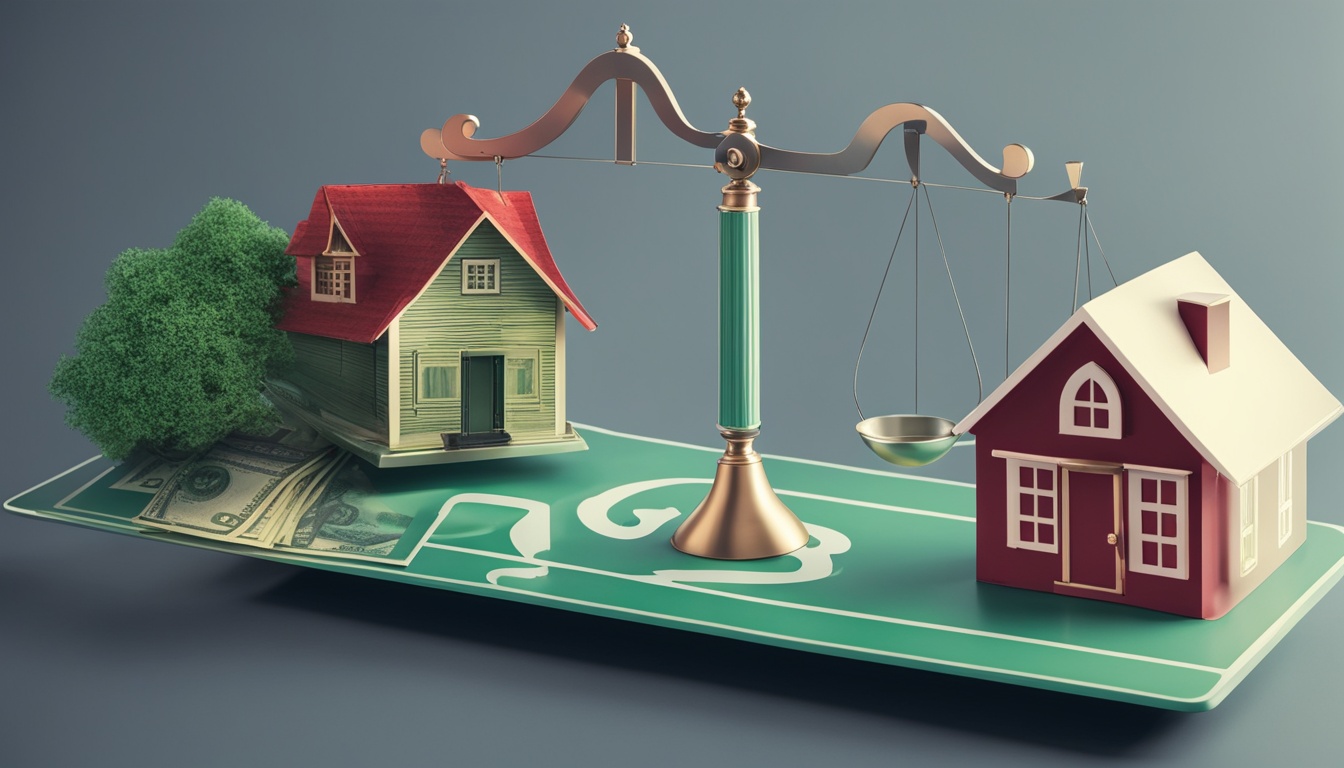Warren Buffett, a famous author and financial expert, once said, “The most important thing to do if you find yourself in a hole is to stop digging.” This advice is very relevant when looking at mortgage financing options. Interest-only loans have become more popular lately. They let homebuyers pay only the loan’s interest at first. But, is this the best choice for your financial goals and plans to own a home? Let’s look at the good and bad sides of interest-only loans to help you decide.
Key Takeaways
- Interest-only loans let you pay just the loan’s interest for a few years, usually 5-10.
- This means lower monthly payments during this time, but your payments will increase when the loan changes to a regular payment plan.
- These loans can be good for those who need short-term financial flexibility or plan to sell the home before the interest-only period ends.
- But, they also have big risks, like higher costs over time and possibly not being able to refinance or sell the home before the interest-only period ends.
- Think about your financial situation and long-term goals before deciding if an interest-only loan is right for you.
Understanding Interest-Only Loans
Interest-only loans are a special kind of mortgage. They offer benefits but also have downsides. Homeowners pay only the loan’s interest for a certain time, usually 5 to 10 years. Then, the loan changes to a regular mortgage with payments for both interest and principal.
What Are Interest-Only Loans?
These loans make borrowers pay only the interest, not the loan’s principal. This means lower monthly payments, great for short-term loans or buy-to-let investments. But, the principal doesn’t go down, causing negative amortization over time.
How Interest-Only Loans Work
With these loans, monthly payments cover just the interest, not the principal. This makes payments easier to manage at first. But, when the interest-only period ends, payments will go up to include both interest and principal. Borrowers need to be ready for this change.
| Loan Type | Interest-Only Period | Monthly Payments | Principal Reduction |
|---|---|---|---|
| Interest-Only Loan | 5-10 years | Lower | None |
| Traditional Mortgage | N/A | Higher | Yes |
Interest Only Loans: Potential Benefits and Drawbacks
When looking at interest-only loans, it’s key to think about the good points and the bad. A big plus is better cash flow management. By just paying the interest, you can save money for other things or pay off debts with higher interest. This is great for people with changing incomes or those wanting more money now.
Interest-only loans also offer flexible repayment terms. You can pay only the interest for 5 to 10 years before switching to paying both interest and principal. This is good for those expecting more money later or needing a smaller monthly payment.
But, these loans have big risks too. One big worry is negative amortization, where the loan grows over time because of the interest. This means you could end up paying more in the long run and owing more money.
“Interest-only loans can be a double-edged sword, offering short-term benefits but potentially leading to higher long-term costs if not managed carefully.”
Switching from paying only interest to paying both interest and principal can also be a big financial hit. Your monthly payments could go way up. Borrowers need to think about their future financial plans and be ready for this change.

Deciding on an interest-only loan means understanding both the good and the bad. It’s smart to talk to a financial advisor. They can help make sure this loan fits your long-term goals and how much risk you can handle.
Conclusion
Adjustable-rate mortgages and principal deferment offer great options for homebuyers looking for different ways to finance their homes. But, interest-only loans come with big risks that might not suit your long-term financial plans. It’s key to think about your budget, how much risk you can handle, and your future goals before choosing an interest-only loan.
These loans can help with short-term money needs but come with the risk of higher monthly bills and needing to pay back the principal later. You need to carefully consider the good and bad sides, know what it means, and talk to financial experts. This ensures an interest-only loan is right for your dream of owning a home.
Choosing an interest-only loan should be a well-thought decision. You need to understand the risks and benefits and know your financial situation well. By looking at all the factors, you can pick a choice that’s good for your financial future and your dream of owning a home.
FAQ
What is an interest-only loan?
An interest-only loan lets you pay just the loan’s interest for a few years, usually 5-10. This means lower monthly payments. But, the loan’s principal doesn’t go down during this time.
How do interest-only loans work?
With these loans, you pay only the interest each month, not the principal. Later, the loan changes to a regular mortgage. Then, you pay both interest and principal.
What are the potential benefits of an interest-only loan?
These loans offer better cash flow early on. You can invest or pay off other debts. Plus, you can adjust payments as your finances change.
What are the potential drawbacks of an interest-only loan?
The big risks include the chance of owing more on the loan and higher costs later. Also, payments can go up when the loan switches to a regular mortgage.
Who might benefit from an interest-only loan?
They’re good for people expecting higher incomes, real estate investors, or those wanting to pay extra on the principal when they can.
When might an interest-only loan not be the best option?
They’re not ideal for first-time buyers, those with unstable jobs, or those planning to stay put long-term. The risks of owing more and higher costs later might outweigh the benefits.

